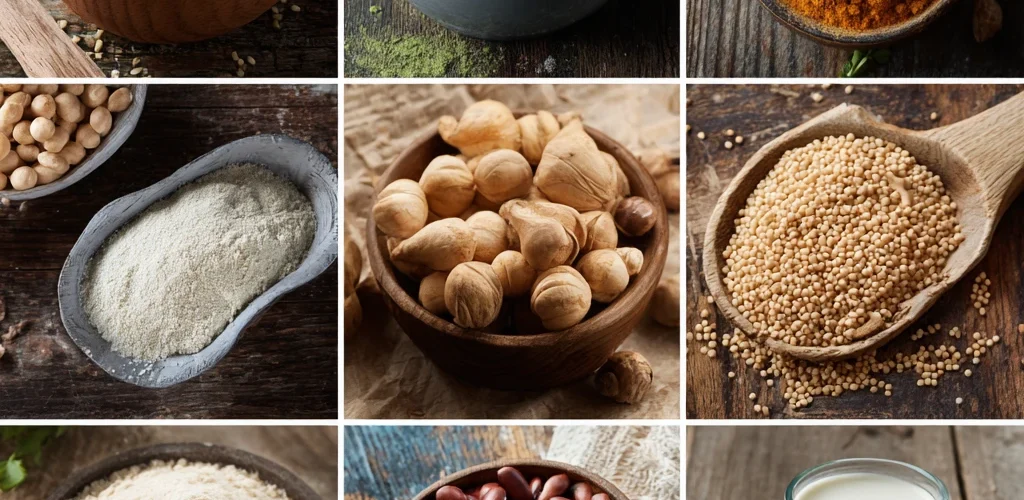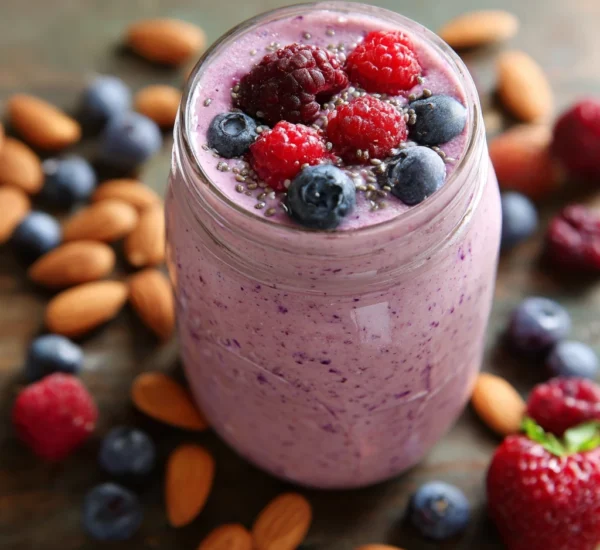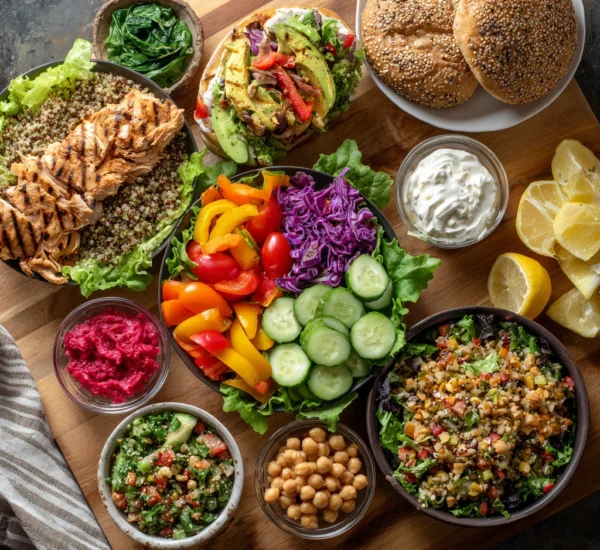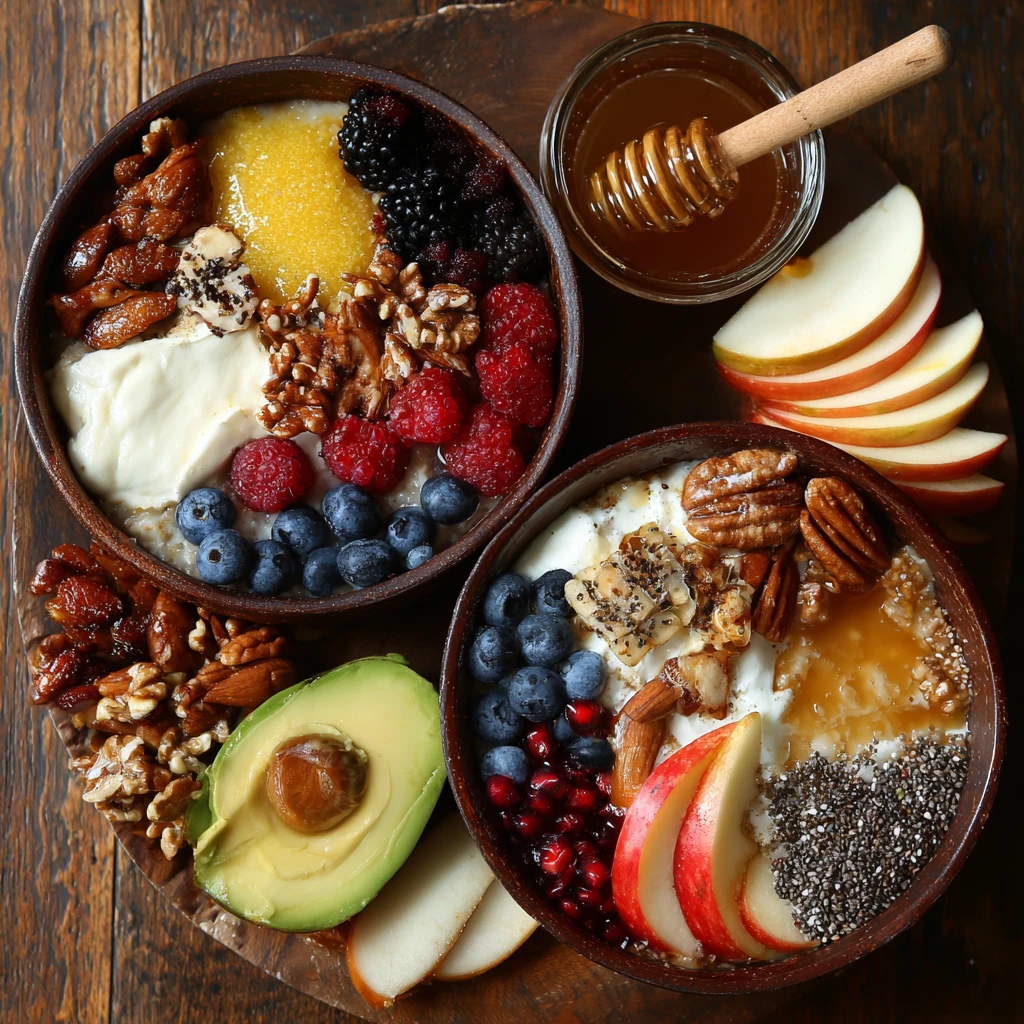Plant-Based Protein Sources Worth Trying
Protein is an essential macronutrient vital for building and repairing tissues, supporting enzyme and hormone production, and maintaining overall health. While animal products are often touted as the primary source of protein, a diverse range of plant-based options can easily meet your protein needs while offering additional health benefits. This article explores ten excellent plant-based protein sources that are worth incorporating into your diet.
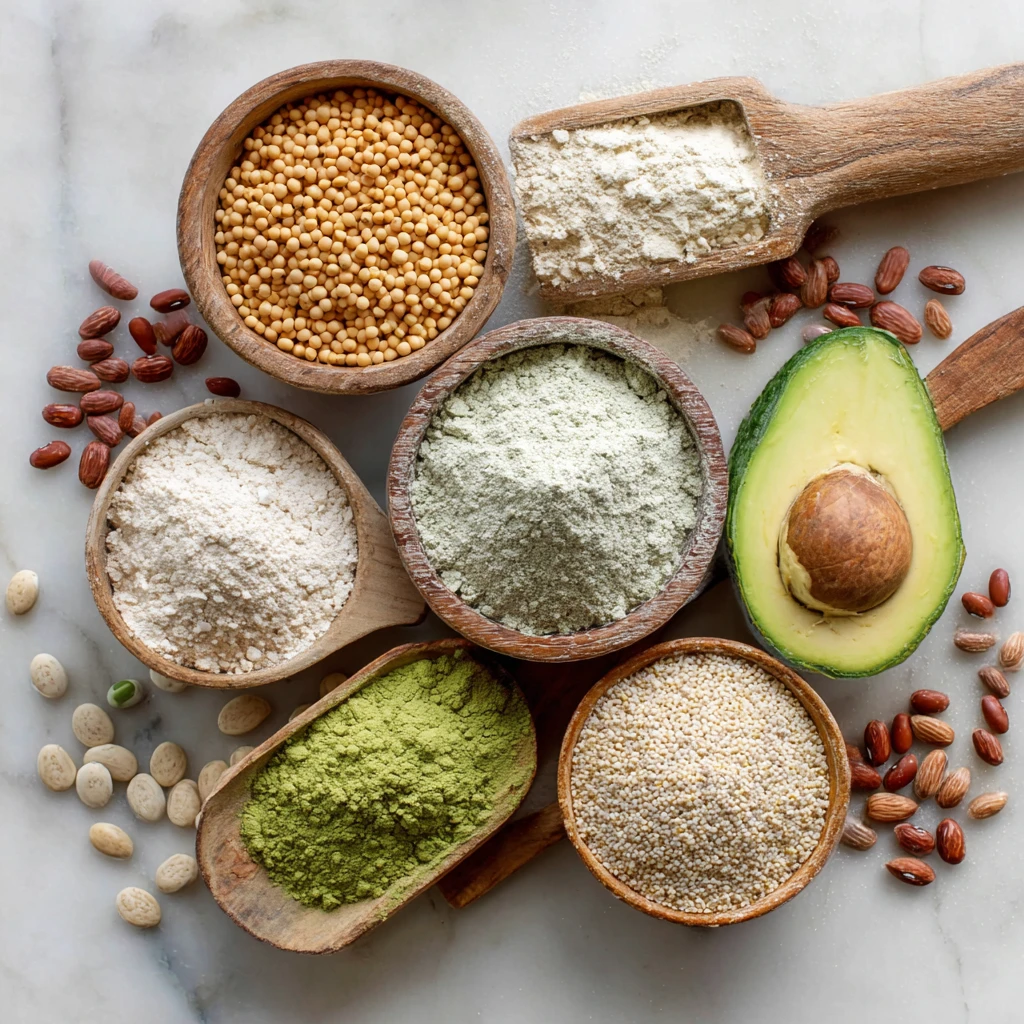
Section 1: Legumes – The Powerhouses of Plant Protein
Legumes, including beans, lentils, and peas, are nutritional powerhouses packed with protein, fiber, and essential nutrients. They are versatile, affordable, and readily available, making them a staple in many cuisines worldwide.
Beans: A Versatile Protein Source
Beans, such as black beans, kidney beans, pinto beans, and chickpeas, offer a substantial amount of protein per serving. One cup of cooked black beans contains approximately 15 grams of protein. Beans are also rich in fiber, which promotes digestive health and helps regulate blood sugar levels. Their versatility allows for use in various dishes, from hearty stews and chili to flavorful salads and dips.
Lentils: Quick-Cooking and Nutrient-Rich
Lentils are another excellent source of plant-based protein, with one cup of cooked lentils providing around 18 grams. They are quick to cook compared to other legumes, making them a convenient option for busy weeknights. Lentils are also a good source of iron, folate, and manganese. They can be used in soups, stews, salads, or as a meat substitute in dishes like shepherd’s pie.
Peas: Sweet and Nutritious
Peas, including green peas and split peas, are a good source of protein and fiber. One cup of cooked green peas provides approximately 8 grams of protein. They are also rich in vitamins A, C, and K. Peas are a great addition to stir-fries, pasta dishes, and side dishes. Split peas are commonly used to make hearty and protein-rich soups.
Section 2: Grains and Seeds – Small but Mighty
While often overlooked, certain grains and seeds can contribute significantly to your daily protein intake. These plant-based sources offer a combination of protein, fiber, and other essential nutrients.
Quinoa: A Complete Protein Source
Quinoa is a complete protein, meaning it contains all nine essential amino acids that the body cannot produce on its own. One cup of cooked quinoa provides approximately 8 grams of protein. It is also a good source of fiber, magnesium, and iron. Quinoa is a versatile grain that can be used as a side dish, in salads, or as a base for grain bowls.
Hemp Seeds: A Nutrient-Dense Superfood
Hemp seeds are a nutritional powerhouse, offering a complete protein profile and a wealth of other nutrients. Three tablespoons of hemp seeds contain approximately 10 grams of protein. They are also rich in omega-3 and omega-6 fatty acids, which are beneficial for heart health. Hemp seeds have a mild, nutty flavor and can be added to smoothies, yogurt, salads, or used as a topping for various dishes.
Chia Seeds: Fiber and Protein Combined
Chia seeds are small but mighty, offering a good source of protein and fiber. Two tablespoons of chia seeds contain approximately 5 grams of protein. They are also rich in omega-3 fatty acids and antioxidants. Chia seeds can be added to smoothies, yogurt, or used to make chia seed pudding. They also have the unique ability to absorb liquid and form a gel-like consistency, making them a great thickening agent.
Section 3: Nuts and Seeds – A Protein-Packed Snack
Nuts and seeds are not only a delicious snack but also a valuable source of plant-based protein and healthy fats. They provide sustained energy and essential nutrients.
Almonds: A Versatile Nut
Almonds are a popular and versatile nut that offers a good source of protein, healthy fats, and vitamin E. One ounce of almonds (about 23 almonds) provides approximately 6 grams of protein. They can be enjoyed as a snack, added to salads or trail mixes, or used to make almond butter or almond milk.
Pumpkin Seeds: A Nutrient-Rich Snack
Pumpkin seeds, also known as pepitas, are a nutritious snack that provides a good source of protein, magnesium, and zinc. One ounce of pumpkin seeds contains approximately 7 grams of protein. They can be eaten raw, roasted, or added to salads, granola, or trail mixes.
Sunflower Seeds: An Affordable Option
Sunflower seeds are an affordable and readily available source of plant-based protein. One ounce of sunflower seeds contains approximately 6 grams of protein. They are also rich in vitamin E and selenium. Sunflower seeds can be eaten as a snack, added to salads, or used as a topping for baked goods.
Section 4: Vegetables – Unexpected Protein Sources
While vegetables are not typically considered primary protein sources, some contain a surprising amount of protein and can contribute to your daily intake.
Broccoli: A Cruciferous Powerhouse
Broccoli is a cruciferous vegetable that offers a good source of protein, fiber, and vitamins C and K. One cup of chopped broccoli contains approximately 2.6 grams of protein. It can be steamed, roasted, or stir-fried and added to various dishes.
Spinach: A Leafy Green Protein Boost
Spinach is a leafy green vegetable that is rich in nutrients, including protein, iron, and vitamins A and C. One cup of cooked spinach contains approximately 5 grams of protein. It can be added to salads, smoothies, soups, or sauteed as a side dish.
Section 5: Soy-Based Products and Alternatives
Soy-based products and alternatives have been a central topic in plant-based diets and offer complete protein sources and versatility in cooking.
Tofu: The Versatile Blank Canvas
Tofu, made from soybeans, is a versatile and widely used plant-based protein source. It’s a complete protein, meaning it contains all nine essential amino acids. Half a cup of firm tofu provides about 10 grams of protein. Tofu’s bland flavor makes it ideal for absorbing flavors from marinades and sauces, and it can be used in stir-fries, scrambles, and even desserts.
Tempeh: Fermented Goodness
Tempeh is another soy-based product, made from fermented soybeans. It has a firmer texture and nuttier flavor than tofu. Half a cup of tempeh contains about 16 grams of protein, making it a great choice for those looking to increase their protein intake. Tempeh can be grilled, baked, or crumbled into sauces and salads.
Edamame: The Perfect Snack
Edamame are young soybeans, often steamed or boiled and served in their pods. They are a complete protein and a good source of fiber and vitamins. One cup of edamame provides about 18 grams of protein. They make a satisfying and healthy snack or side dish.
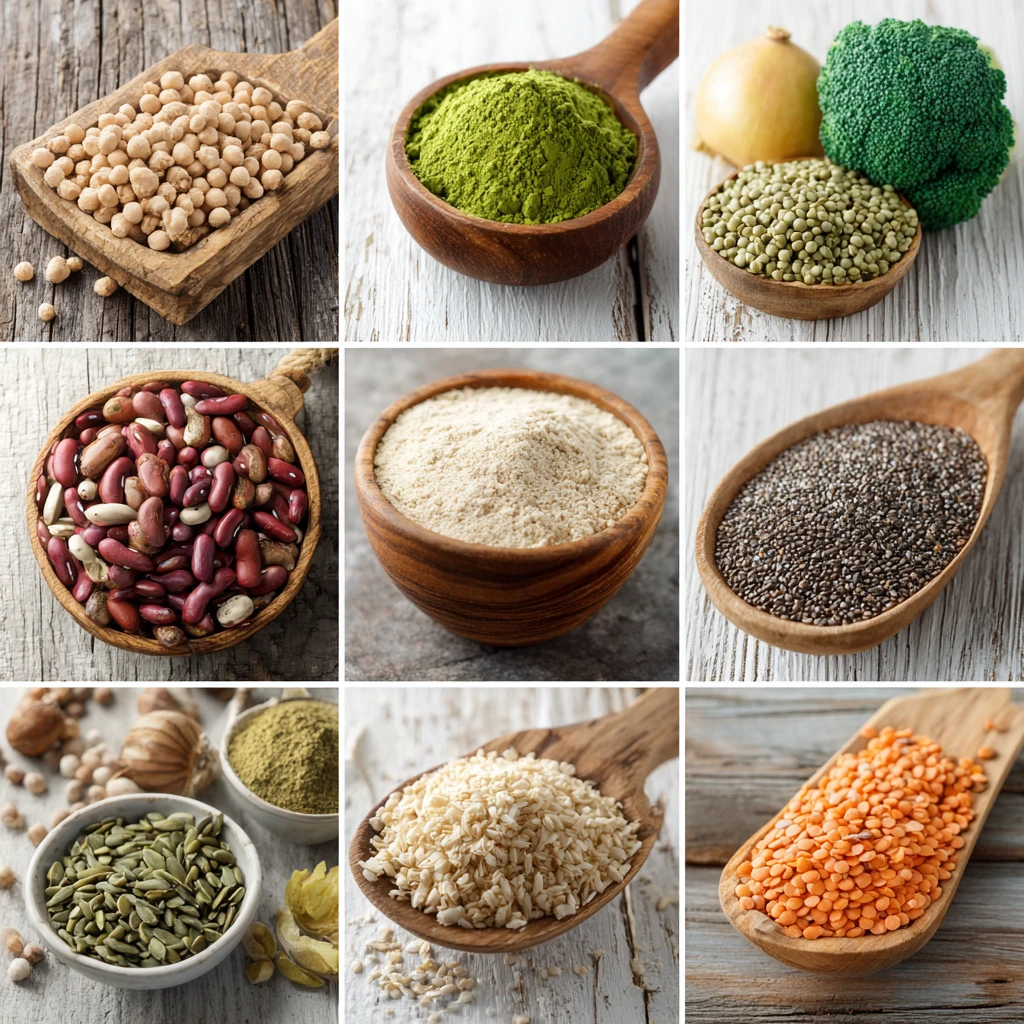
Frequently Asked Questions (FAQs)
What are the best plant-based protein sources for muscle building?
Good options include quinoa, tofu, tempeh, lentils, beans, hemp seeds, and edamame. These provide a good amount of protein and essential amino acids necessary for muscle repair and growth. Combining different sources throughout the day ensures you get a complete amino acid profile.
How can I get enough protein on a plant-based diet?
Planning your meals to include a variety of protein-rich plant-based foods is crucial. Incorporate legumes, grains, nuts, seeds, and soy-based products into your daily diet. Track your protein intake using nutrition apps to ensure you’re meeting your individual needs based on your activity level and health goals.
Are plant-based proteins as good as animal proteins?
Plant-based proteins can be just as effective as animal proteins, especially when you consume a variety of sources to ensure you get all the essential amino acids. Some plant-based sources, like quinoa and soy, are complete proteins, while others can be combined to create complete proteins.
What is the most complete plant-based protein?
Quinoa and soy-based products (tofu, tempeh, edamame) are considered complete proteins because they contain all nine essential amino acids.
How do I cook tempeh to make it taste better?
Steaming tempeh before cooking can help reduce its bitterness. Marinades, particularly those with savory or smoky flavors, enhance its taste. Tempeh can be baked, grilled, or pan-fried until crispy. Crumbling it into sauces or stir-fries also helps it absorb flavors.
Which vegetables are highest in protein?
While vegetables are not as protein-dense as legumes or nuts, some offer a decent amount. Spinach, broccoli, peas, asparagus, and Brussels sprouts are among the vegetables highest in protein.
